On today's edition of Zn Reviews, we've got the classic euro board game, Race for the Galaxy!
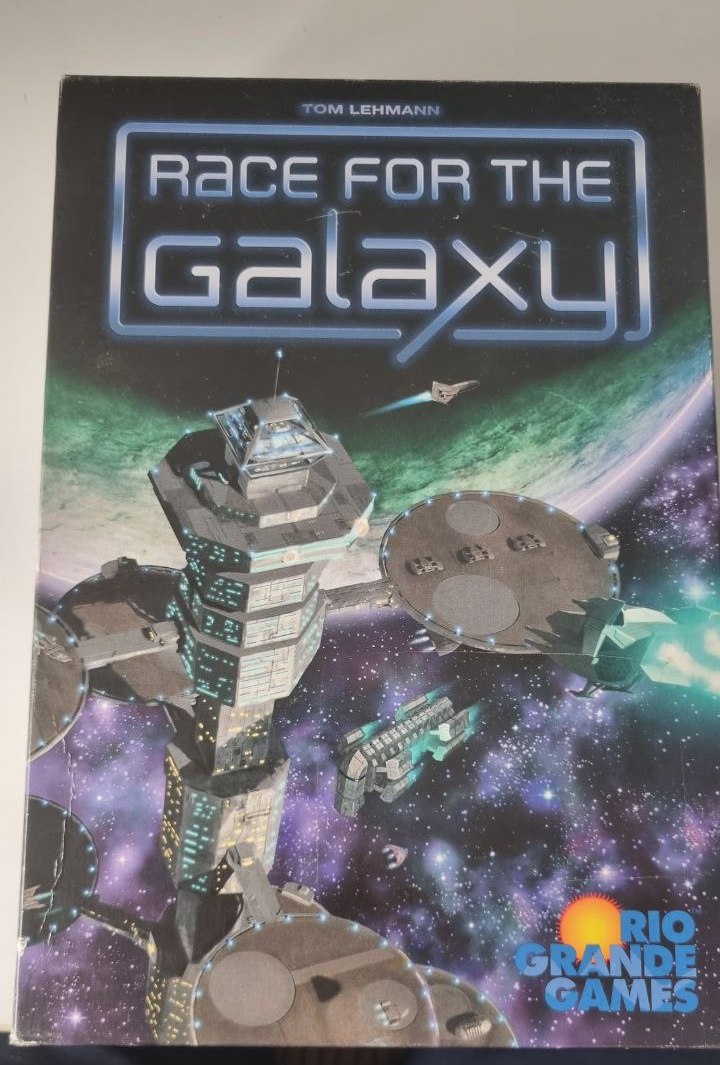
First released in 2007, this old soul of a game ranks 7.8 on BoardGameGeek and with a weight rating of 2.99/5.
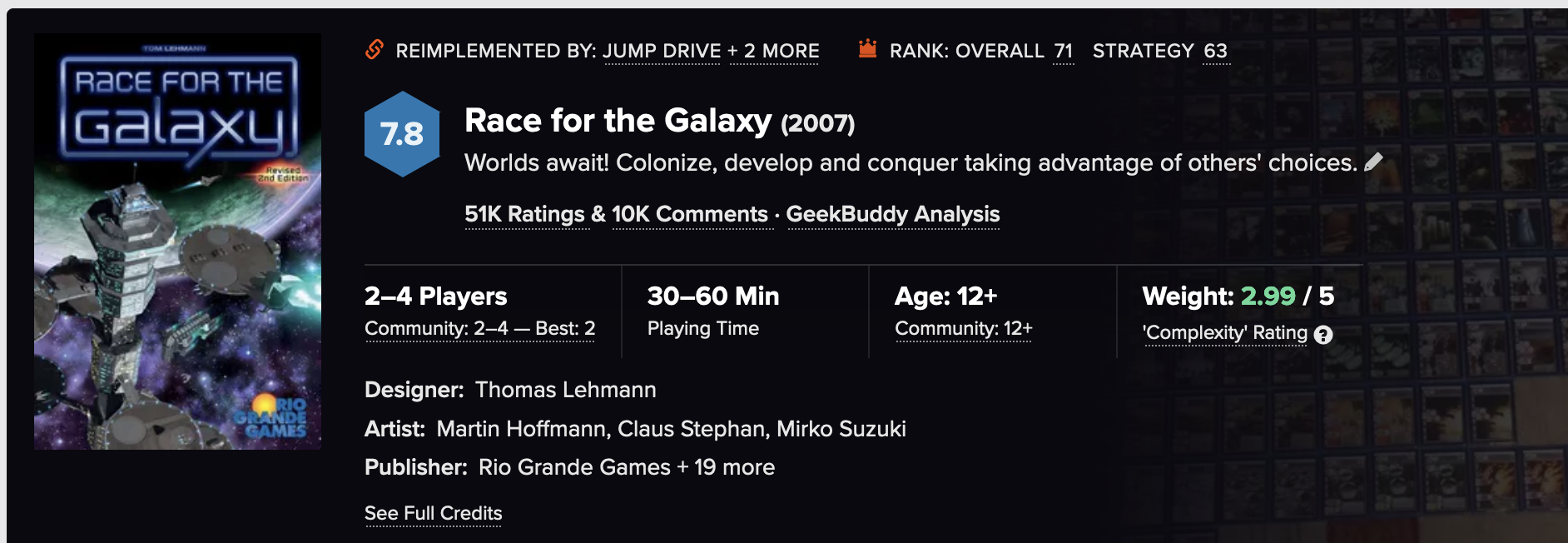
This means that it isn't the most beginner friendly board game and isn't really something that you should bust out when you are first introducing people to board games. Despite the high rating on BoardGameGeek, I have a love-hate relationship with this game.
Mechanics
This game relies on each player creating their own tableau. In board games, tableau simply means the area in front of each player, and each player has a virtual "board" in front of them which they build up over the course of the game.
Race for the Galaxy's theme focuses on space empire building, and allows for players to devise different strategies to accumulate the most victory points on their tableau and through point collection.
The main gist is this: Cards are used to pay for cost. Colonize planets that have resources and VP. Use resources in your space economy for more VP. Develop tech to cut costs or multiply VP. Trade for more card draws, making it easier to repeat the cycle.
There are multiple alternate strategies that the game tries to open up, such as hostile world takeovers (using military power), rebel world takeovers (where there are special effects for taking over a rebel world)
Thoughts
I do like the fact that the game is true to its name, that it is a race to reach a certain victory point total. I also like that card draws is the economy of the game, where you use cards to place down cards in your tableau. I don't think that I have really played many games with this mechanic, and it also helps to slim down the components in the box too. No more fiddling with money tokens...
However, after playing the game multiple times with many different groups, I have come to the conclusion that I cannot overlook its flaws and that I had to release it from my personal collection.
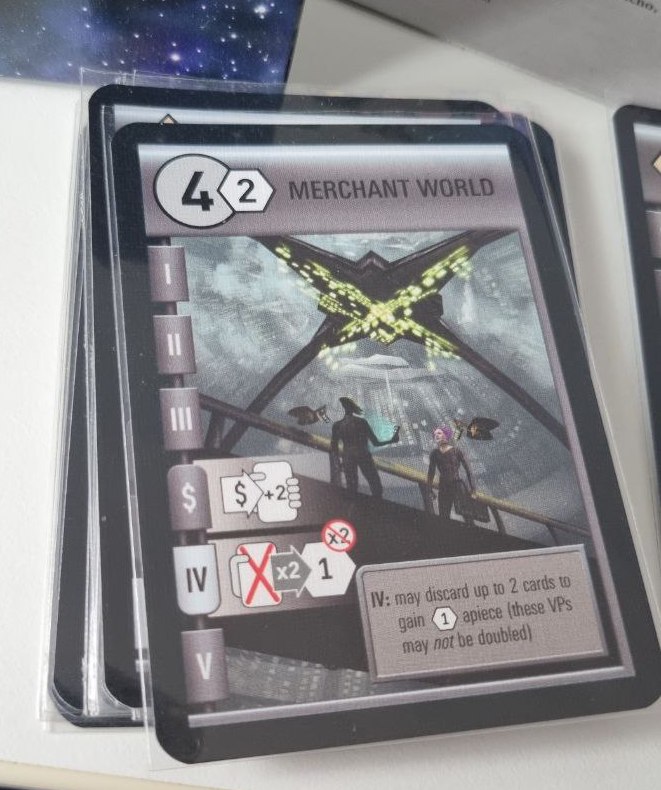
The art style is very old. Considering that it was released in 2007, it is quite understandable, but the space-theme and art is like a throwback to the pre-2000s sci-fi art style. To some it might not seem like a very big issue, but aesthetics in board games is very important, especially when it comes to making an impression on new players and teaching the rules. If the art isn't pretty and intersting and inviting to the eyes, it will be a hard sell to table it.
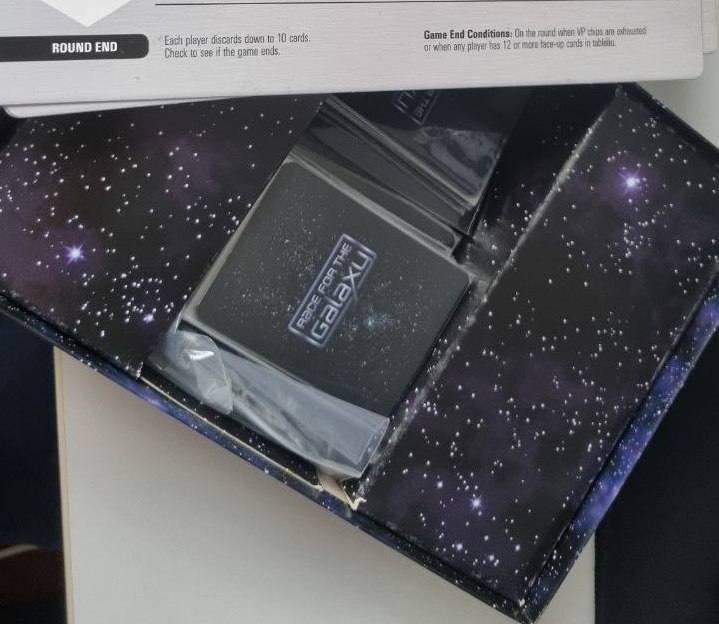
I truly dislike it when board game publishers fill up a box with empty space. The box is literally half empty! All that is actually required for this game is the deck of cards and the victory points in the ziplock. That is all. I think that this hearkens back to the days where size of a board game box indicated its value, but nowadays, given the many varieties of games and the sheer number of games being published, how can publishers expect players to allow such dead space in their shelf? Granted, the player aid cards are quite necessary to play (I'll rant about those in a bit), but can't those be folded up or compressed even further? I think the box-to-components ratio is absolutely horrible, and I could literally pocket all the components if I really wanted to.
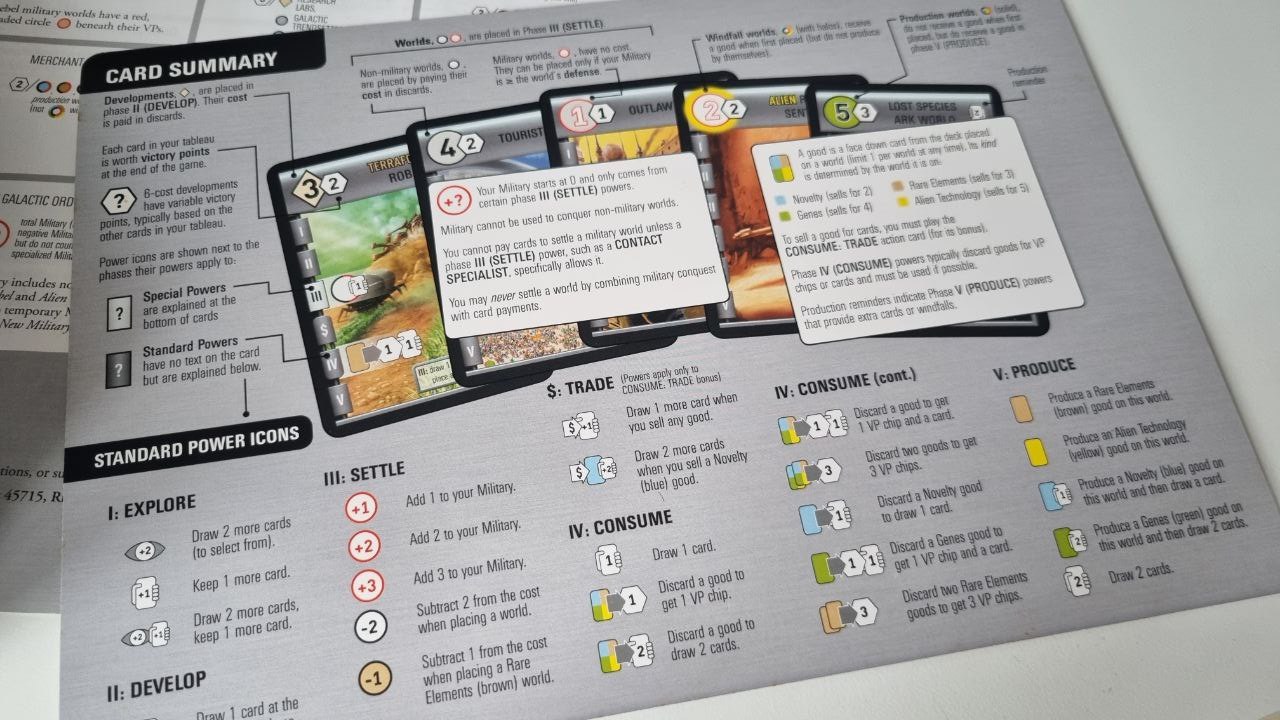
Now, on to the player aid cards. The cards are extremely complex. The reliance on so many symbols as well as the different variations of symbols for complex cards results in players having to always reference the cards. Sure, one could eventually go without them after 10 plays, but do you not realise how difficult it is to even convince others to table it for 1 play, given the art style? I would say that more than half the gameplay is spent waiting for players to read and understand what cards they drew from the deck and reading the symbology from the player aid card.
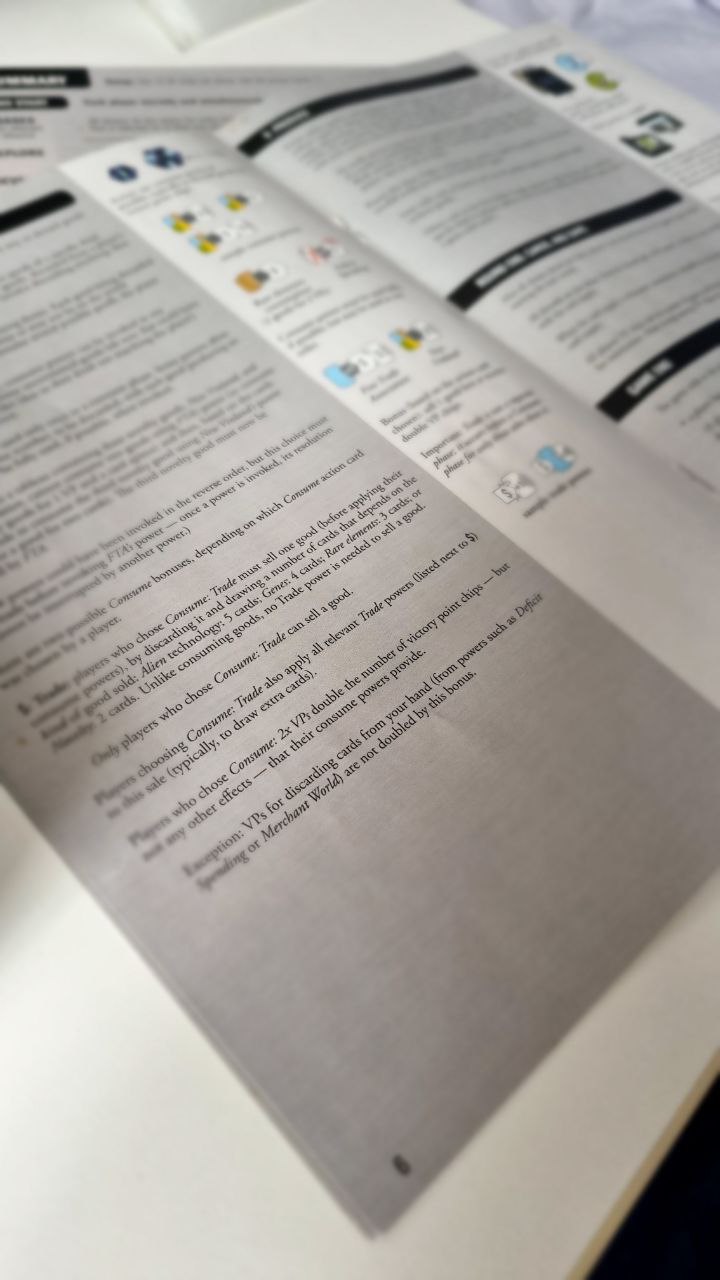
And also, look at that rule book! Sure, it isn't the thickest rule book out there and I have definitely seen thicker, but the rules are SO DRY. The only way to learn the rules without falling asleep would be to either watch a gameplay video or a rules explanation video. The rulebook could definitely be improved, and it just doesn't make sense to have it so complex and dry when the game is actually very simple.
Regarding the gameplay, it feels like group solitaire, where each player only really interacts at the start of the round when the round sequences are determined. Besides that, there isn't really much player interaction. Given that it is a rather friendly euro, there isn't much blocking that you can do to other players, making it too friendly for my liking. Each player focuses on their own tableau trying to optimize their engine, waiting for slower players and then restarting the round each time. There is a little mini game-theory analysis going on at the start of each round when players choose their event cards based on what other players have played before, but there is only so much that you can do to alter the chain of events that happens after a few rounds, and in my opinion it has minimal effect on the end result of the game.
Furthermore, whether you win the game is dependent on the luck of the draw. If you're lucky and draw great cards that suit your strategy, then you'll be having a great game. Imagine if you're playing miltary-rebel strategy, trying to conquer as many rebel/hostile planets as fast as possible, and all you draw are production-related cards. You'd be frustrated as heck.
Wrapping up
All in all, I would say that one should try this game at a board game cafe or from a friend's collection to at least experience the game mechanics once. However, it isn't really a mind-blowing game and I personally no longer keep this in my collection anymore. There are other better euros out there with much more player interaction and that are more deterministic and skill-based.